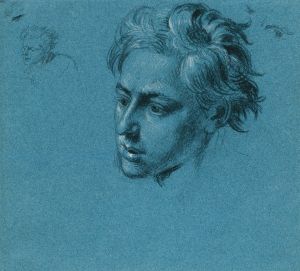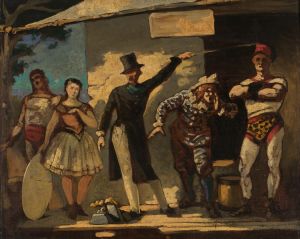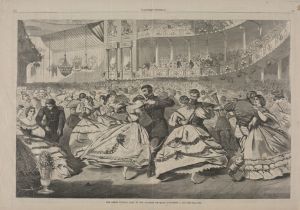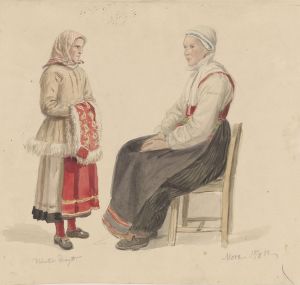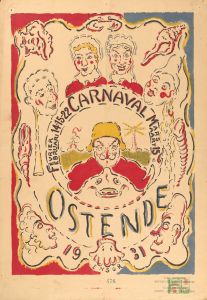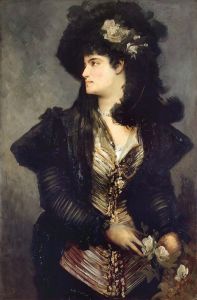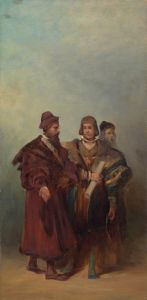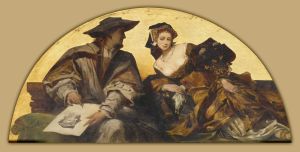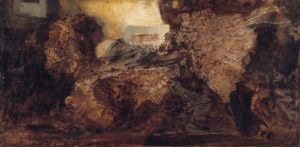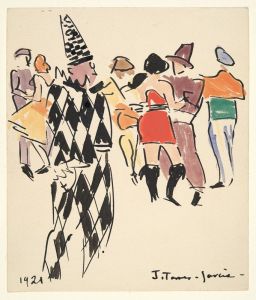
Entwurf zum Festzug 1879 – Die Fleischselcher
A hand-painted replica of Hans Makart’s masterpiece Entwurf zum Festzug 1879 – Die Fleischselcher, meticulously crafted by professional artists to capture the true essence of the original. Each piece is created with museum-quality canvas and rare mineral pigments, carefully painted by experienced artists with delicate brushstrokes and rich, layered colors to perfectly recreate the texture of the original artwork. Unlike machine-printed reproductions, this hand-painted version brings the painting to life, infused with the artist’s emotions and skill in every stroke. Whether for personal collection or home decoration, it instantly elevates the artistic atmosphere of any space.
Hans Makart was a renowned Austrian painter of the 19th century, celebrated for his historical and allegorical paintings, as well as his influence on the Viennese art scene. One of his notable works is "Entwurf zum Festzug 1879 – Die Fleischselcher," which translates to "Design for the Parade 1879 – The Butchers." This work is part of a series of designs created by Makart for a grand parade held in Vienna in 1879.
The parade was organized to celebrate the silver wedding anniversary of Emperor Franz Joseph I and Empress Elisabeth of Austria. Makart was commissioned to design the pageant, which was a significant cultural event in Vienna, showcasing the city's artistic and cultural heritage. The parade featured various floats, each representing different trades, historical events, or allegorical themes, and Makart's designs were central to its visual spectacle.
"Entwurf zum Festzug 1879 – Die Fleischselcher" specifically represents the butchers, one of the many trades depicted in the parade. Makart's design for this float would have included detailed and elaborate costumes, decorations, and possibly even the arrangement of participants, reflecting his characteristic opulent and theatrical style. His work often featured rich colors, dynamic compositions, and a keen attention to detail, all of which would have been evident in his designs for the parade.
Makart's involvement in the 1879 parade was a testament to his status as a leading artist in Vienna at the time. His ability to blend historical references with contemporary cultural elements made his work particularly appealing to the Viennese public and the imperial court. The parade itself was a massive undertaking, involving numerous participants and attracting large crowds, and Makart's designs played a crucial role in its success.
While specific details about the "Die Fleischselcher" design are limited, it is known that Makart's overall contribution to the parade was highly praised. His designs were seen as a reflection of Vienna's cultural vibrancy and artistic innovation during the late 19th century. The parade and Makart's involvement in it are often cited as highlights of his career, showcasing his ability to work on a grand scale and his talent for creating visually stunning and thematically rich compositions.
Makart's influence extended beyond painting; he was a key figure in the development of the "Makartstil" or "Makart style," which influenced various aspects of Viennese culture, including interior design, fashion, and theater. His work on the 1879 parade is an example of how his artistic vision permeated different cultural domains, leaving a lasting impact on the aesthetic sensibilities of the time.
In summary, "Entwurf zum Festzug 1879 – Die Fleischselcher" is a representation of Hans Makart's involvement in the 1879 Vienna parade, celebrating the imperial couple's anniversary. Although specific details about this particular design are scarce, it is part of a larger body of work that highlights Makart's significant contribution to Viennese art and culture.





